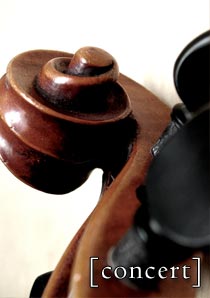Voyage to the East
| Year Composed: | 2010 |
| Instrumentation: | 2+picc.2(II=EH).2+bcl.2/4.3.3.1/timp+3 perc/hp/pno/strings |
| Duration | 18 minutes |
| I | Dreamscapes |
| II | Scherzo: The Fall of London Bridge |
| III | Finale |
Audio Excerpts (MP3)
Program Notes
I was first approached to compose this work by maestro John Barnum during the fall of 2008. He proposed a large-scale symphonic piece that would span multiple cultures, taking the audience on an exhibition-like journey across Asia -- a 'voyage to the East' told through music. I found this idea both tremendously exciting and fraught with challenges -- a combination that was ripe for creative inspiration!
I decided eventually against the idea of portraying a literal voyage from one place to another, sensing that in the end this would compromise the music's internal narrative. Instead, the 'voyage' of the title is a purely dramatic one, and the work is -- ironically -- less programmatic than most of my other orchestral music.
I was also reluctant to delve too deeply into the styles I might be 'appropriating.' Ultimately, rather than grounding the music in authenticity, I wanted to achieve something that would be a manifestation of my own impressions, memories, and other semi-conscious impulses, which I felt would result in a more honest and intriguing musical discourse.
Voyage to the East is cast in three movements. The first, "Dreamscapes," paints a portrait of otherworldliness that is at once majestic and forbidding. An icy theme on the English horn gradually flourishes into a full-blooded chorale, before launching into a storm of sound and fury, combining loose variations of Japanese and Indonesian scales with propulsive, John Adams-like minimalism.
The impetus for the wildly Pan-Asian second movement ("Scherzo: The Fall of London Bridge") arose simply from my desire to write a short but 'fiery' scherzo, which I had not really attempted before. In it, the titular nursery rhyme "London Bridge is Falling Down" is transformed into something darker, with a hint of dormant aggression that is then unleashed by the 'war drums' of the percussion section.
The final movement ("Finale") was an attempt for me to reconcile my Chinese roots with my own general lack of genuine connection with Chinese culture. I avoided researching the tradition so that I could confront it head on, with little guiding me but the urgency of expression. Multiple themes are woven throughout the movement, which begins as an elegy but ends in high spirits, although there is room for contemplation before the final climax.
Sheet Music
- Score & parts available for rental here.
Performances
- February 13, 2010 - Mississauga Symphony Orchestra, conducted by John Barnum. Hammerson Hall, Living Arts Centre, Mississauga

